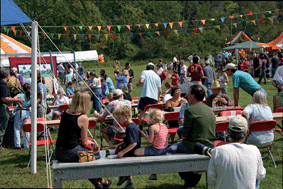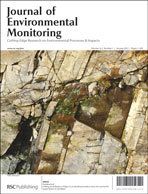An observational field study was conducted to assess the feasibility of a community duplicate diet collection method; a dietary monitoring tool that is population-based. The purpose was to establish an alternative procedure to duplicate diet sampling that would be more efficient for a large, defined population, e.g., in the National Children's Study (NCS). Questionnaire data and food samples were collected in a residence so as not to lose the important component of storage, preparation, and handling in a contaminated microenvironment. The participants included nine Hispanic women of child bearing age living in Apopka, FL, USA. Foods highly consumed by Hispanic women were identified based on national food frequency questionnaires and prioritized by permethrin residue concentrations as measured for the Pesticide Data Program. Participants filled out questionnaires to determine if highly consumed foods were commonly eaten by them and to assess the collection protocol for the food samples. Measureable levels of permethrin were found in 54% of the samples. Questionnaire responses indicated that the collection of the community duplicate diet was feasible for a defined population.

You have access to this article
 Please wait while we load your content...
Something went wrong. Try again?
Please wait while we load your content...
Something went wrong. Try again?


 Please wait while we load your content...
Please wait while we load your content...